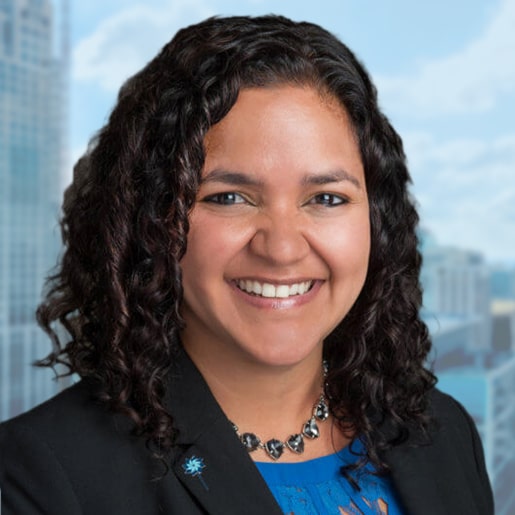Despite the stress of the pandemic, most parents in households with at least one child with special health care needs felt close to their children during this time and did a variety of activities with them, according to a family snapshot survey. But families in these households also experienced several challenges, including high rates of disruption in day care, health care, and employment, and a loss of technological and therapeutic supports.
The American Academy of Pediatrics (AAP) in collaboration with the Centers for Disease Control and Prevention (CDC), Prevent Child Abuse America, and Tufts Medical Center, is surveying a total of 9,000 parents over a period of seven months to measure the impact of the pandemic on family life, adverse childhood experiences (ACEs), and positive childhood experiences. The latest Family Snapshot report seeks to understand the significant impact on families raising children and youth with special health care needs.
As noted in an earlier report, a major impact on families during the pandemic has been the disruptions to children’s daily lives. This is especially true for families with children with special health needs. More households with children with special needs indicated disruptions compared to other households (92% vs 74%). Specifically, households with kids with special needs experienced higher rates of disruptions in child care or day care closings (24% vs 17%); canceled medical or dental appointments (45% vs 25%); and the inability to receive free or reduced cost meals at school (18% vs 9%).
“Families with children with special health care needs had a particularly hard time during the pandemic,” said Robert Sege, MD, PhD, a pediatrician at Tufts Children’s Hospital and director of the Center for Community-Engaged Medicine at Tufts Medical Center. “Physical distancing meant that, for many families, the therapists that they had depended on were less available, and the loss of in-person schooling may have been even more difficult.”
Families in households with children with special needs experienced financial stress (41%) at similar rate as other families (37%), the survey found. However, parents who were employed either full-time or part-time before the pandemic, reported a higher percentage of change in employment in households with special needs (61%) compared to other households (46%), indicating that parents from households with special needs were laid off, were furloughed, or had reduced work hours at a higher rate.
Fifteen percent of parents of children with special needs reduced their work hours to care for children or family, and female parents were more likely to reduce work hours compared with males (19% v 11%). The number of parents in households without children with special needs reducing work hours to care for children or family was slightly lower at 10%.
Other findings:
- Most parents in households with children with special needs enjoyed positive experiences with their children. Similar to households without children with special needs, parents in households with at least one child with special needs had done a variety of activities with their children in the seven days prior to taking the survey, including watching TV or other media together (72%), cooking together (63%), and engaging in educational activities (53%). In addition, 71% of these parents have felt quite close or extremely close to their children since the start of the pandemic.
- Parental stress was associated with accessing certain services. Those who reported feeling nervous or stressed most/all the time were more likely to have accessed mental/behavioral health or social work services for their child during the pandemic compared with those who did not report these feelings (42% vs. 31%).
- The number of parents in households with children with special needs reporting family violence was higher than parents in households without children with special needs. More parents in households with at least one child with special health care needs reported intimate partner violence during the pandemic compared with other households (physical and/or emotional intimate partner violence: 30% vs 17%), physical partner violence (17% vs 7%), and emotional partner violence (26% vs 15%).
“When pediatricians work with these families, it makes sense to ask about how they have coped, and to be on the lookout for lasting problems for both children and adults in the family,” Dr. Sege said.
Resources for Pediatricians
- Caring for Children and Youth With Special Health Care Needs During the COVID-19 Pandemic
- Helping to Prevent Maltreatment of Children With Disabilities
- Psychosocial Factors in Children and Youth With Special Health Care Needs and Their Families
- Preventing Childhood Toxic Stress: Partnering With Families and Communities to Promote Relational Health
- COVID-19 Resources for Children with Special Health Care Needs
Resources for Families
- COVID-19: Caring for Children and Adolescents with Special Health Care Needs
- How can I help my child, who has a disability, cope during COVID-19?
- Complex Child: COVID-19 Information
- Family Voices: National Family-led Organization
About the American Academy of Pediatrics
The American Academy of Pediatrics is an organization of 67,000 primary care pediatricians, pediatric medical subspecialists and pediatric surgical specialists dedicated to the health, safety and well-being of infants, children, adolescents and young adults. For more information, visit www.aap.org.
About Prevent Child Abuse America
Prevent Child Abuse America is a leading champion for all children in the United States. Founded in 1972 and headquartered in Chicago, we are the nation’s oldest and largest organization dedicated to the primary prevention of child abuse and neglect, working to actively prevent all forms of child abuse and neglect before they occur. Our success is founded on a nationwide network of state chapters and nearly 600 Healthy Families America home visiting sites, which directly provide parents and caregivers a wide variety of services and resources that help children grow up to be productive, contributing members of their communities and society. Our comprehensive approach is informed by science—we translate and disseminate innovative research to promote proven solutions that our vast network then puts into action. And we raise public awareness and advocate for family friendly policies at the national, state and local levels to support transformative programs and promote the conditions and contexts that help children, families and communities across the country thrive.
About Tufts Medical Center and Tufts Children’s Hospital
Tufts Medical Center is an exceptional, not-for-profit, 415-bed academic medical center that is home to both a full-service hospital for adults and Tufts Children’s Hospital. Conveniently located in downtown Boston, the Medical Center is the principal teaching hospital for Tufts University School of Medicine. The Medical Center features a level one trauma center with rooftop helipad, the largest heart transplant center in New England and a renowned research program, ranking among the top 10 percent of independent hospitals to receive federal research funding. Tufts Medical Center is a founding member of Wellforce. For more information, visit www.tuftsmedicalcenter.org.



